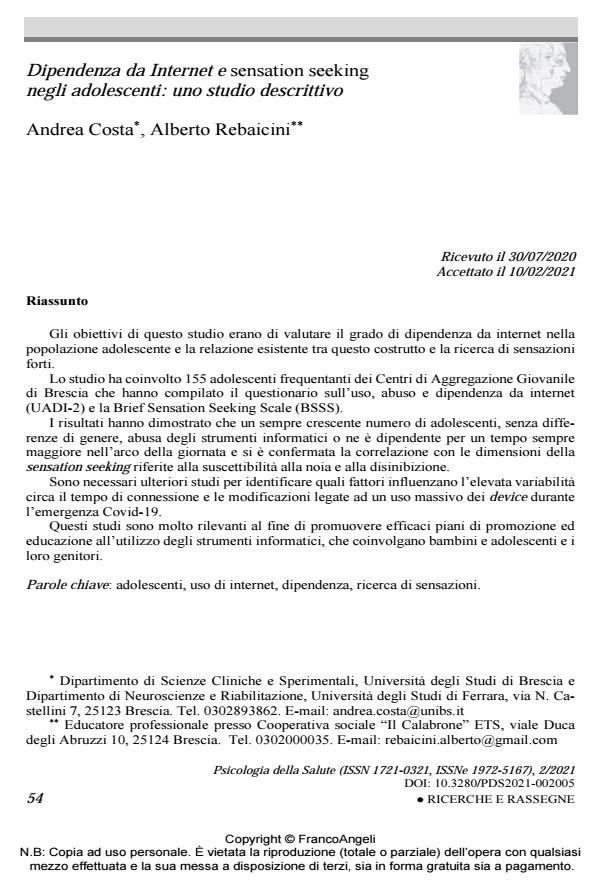Internet dependency and sensation seeking among adolescents: a descriptive study
Journal title PSICOLOGIA DELLA SALUTE
Author/s Andrea Costa, Alberto Rebaicini
Publishing Year 2021 Issue 2021/2
Language Italian Pages 22 P. 54-75 File size 334 KB
DOI 10.3280/PDS2021-002005
DOI is like a bar code for intellectual property: to have more infomation
click here
Below, you can see the article first page
If you want to buy this article in PDF format, you can do it, following the instructions to buy download credits

FrancoAngeli is member of Publishers International Linking Association, Inc (PILA), a not-for-profit association which run the CrossRef service enabling links to and from online scholarly content.
This research aimed to evaluate the level of internet dependency among the adolescent population and its existing correlation with sensation seeking. A questionnaire on the use, abuse and internet dependency (UADI-2) and the Brief Sensa-tion Seeking Scale (BSSS) was submitted to a group of 155 adolescents who regularly attend Youth Aggregation Centers in Brescia. The results demonstrated that an increasing number of adolescents, regardless of the gen-der, abuse and depend on computing devices for ever-greater period of time throughout the day and confirmed the strict correlation with the aspects of sensation seeking related to dull-ness susceptibility and uninhibited behavior. Additional studies are necessary to identify the factors that affected the high variability of the connecting time and modifications linked to a massive use of devices during the Covid-19 pandemic. Such studies are particularly relevant in order to promote effective promotional and educa-tional plans about the employment of computing technology, involving children, adolescents and their parents.
Keywords: Adolescents, internet use, addiction, sensation seeking.
Andrea Costa, Alberto Rebaicini, Dipendenza da Internet e sensation seeking negli adolescenti: uno studio descrittivo in "PSICOLOGIA DELLA SALUTE" 2/2021, pp 54-75, DOI: 10.3280/PDS2021-002005